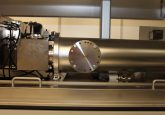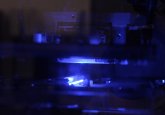Liver MRI may be superior to biopsy for measuring total body iron balance

Research from a team at the Saban Research Institute of Children’s Hospital Los Angeles (IL, USA) has demonstrated that liver MRIs are more accurate than biopsy in determining the total body iron balance of patients with disorders requiring ongoing blood transfusion therapy. Their findings follow their earlier work in developing MRI techniques for the noninvasive measurement of liver iron levels.
Treatment of diseases such as thalassemia and sickle cell disease typically requires a blood transfusion every three weeks. However, each transfusion introduces excess iron, which requires treatment with chelating agents to prevent organ damage or death. It is therefore essential to monitor total body iron balance in such patients.
Prior to 2002, children with sickle cell disease or thalassemia required painful liver biopsies every one to two years to monitor the iron levels in their bodies. In addition to the discomfort, liver biopsies can cause dangerous bleeding and have high sample variability.
The team closely monitored the amount of iron 46 patients were receiving by transfusion and the amount of an experimental chelating agent they consumed, providing insights into the expected changes in iron levels. MRI estimates of iron concentration were then made from the whole liver, eliminating analytical error and significant sampling variability associated with biopsy. Depending on which part of the liver is sampled, liver biopsy has been reported to have a sampling error between 9 and 44%.
In the 49 participating patients, liver iron was measured by MRI during initial treatment, and then after 3, 6, 12 and 24 months of blood transfusion therapy. The team then used mathematical simulations to conclude that MRI liver iron measurements were more accurate, even when compared to the ‘best possible’ liver biopsy. In practice, according to Wood, the accuracy of MRI compared to biopsy is likely to be even greater than their estimates.
John Wood, cardiologist and biomedical engineer at Children’s Hospital Los Angeles and professor of pediatrics at the Keck School of Medicine at the University of Southern California (CA, USA), was one of the contributors to the research. “Measuring total body iron using MRI is safer and less painful than biopsy,” Wood explained. “In this study we’ve demonstrated that it is also more accurate. MRI should be recognized as the new ‘gold standard’ for determining iron accumulation in the body.”
Sources: Wood JC, Zhang P, Rienhoff H, Abi-Saab W, Neufeld EJ. Liver MRI is more precise than liver biopsy for assessing total body iron balance: a comparison of MRI relaxometry with simulated liver biopsy results. doi: 10.1016/j.mri.2015.02.016 (2015) (Epub ahead of print); Total body iron balance: liver MRI better than biopsy.






